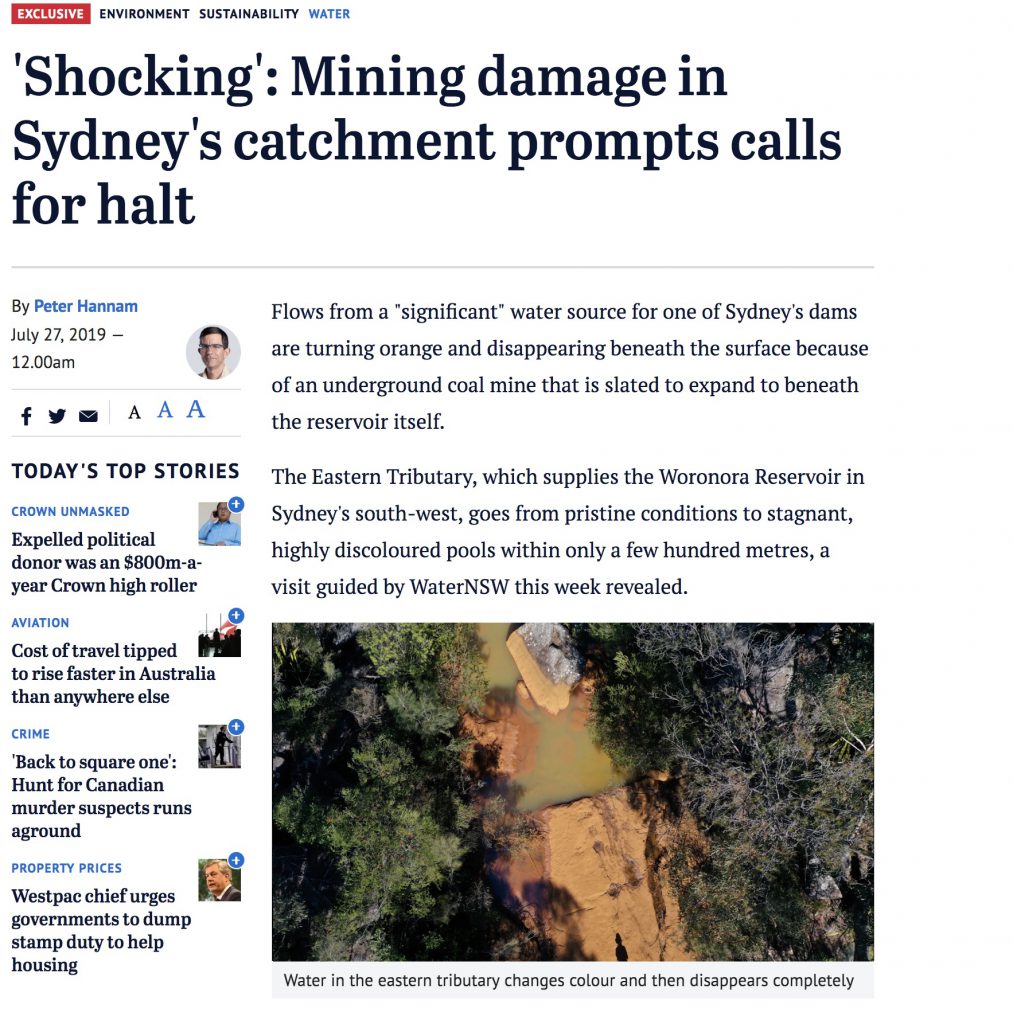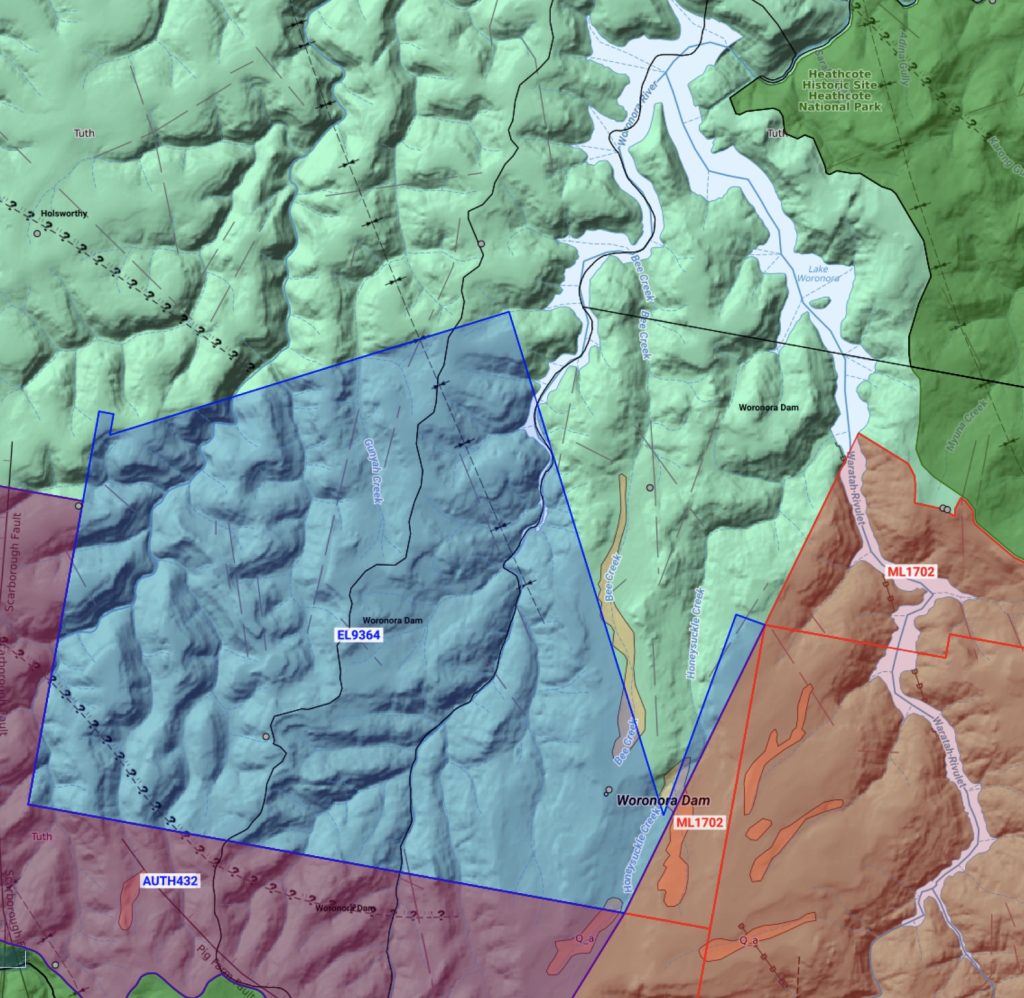This page is about damage to the Woronora Reservoir catchment as a result of longwall coal mining by Peabody Energy. Coal waste material released from the company’s pit top at Helensburgh has now polluted the Hacking River catchment which flows through the full length of the Royal National Park as well. The NSW Environmental Protection Authority are currently reviewing these coal waste discharges, determining how much the company should be fined. Following the flooding in February coal waste washed up through the Audley Weir heritage precinct. You can find more information about this at this link.
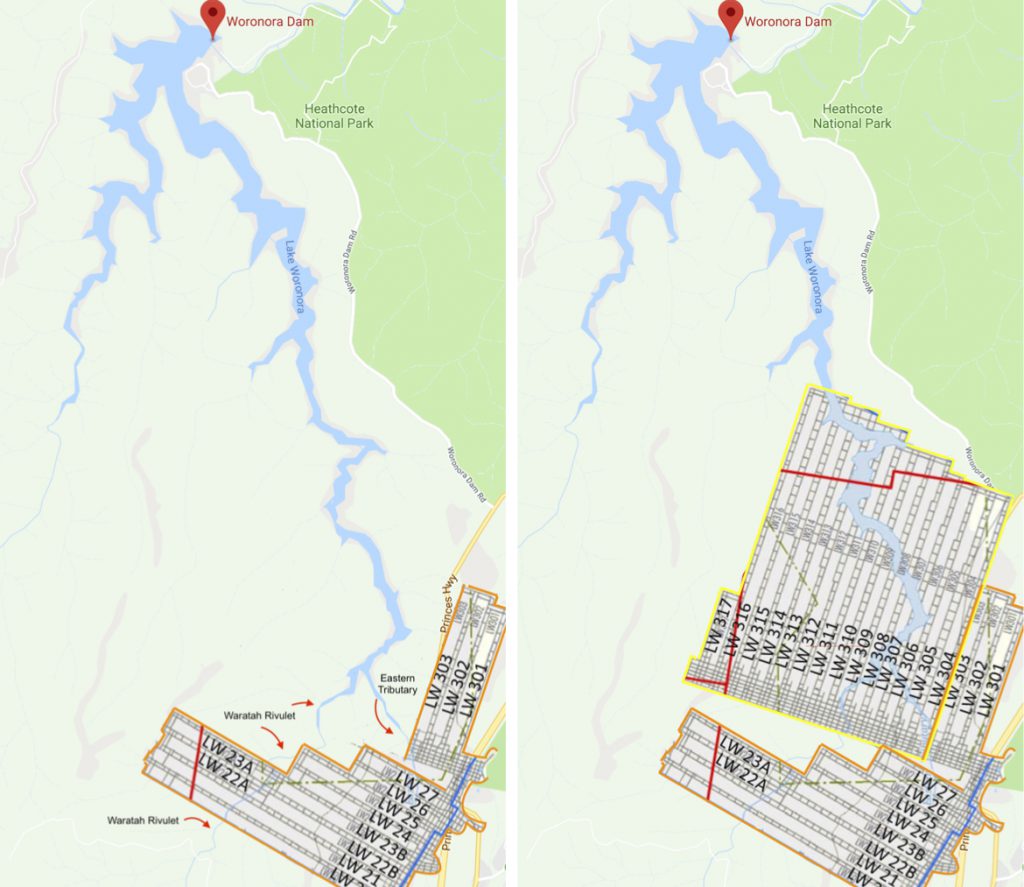
The reason the pollution in the Royal is occurring is because in 2009 in-principle approval was given for 10 longwall mines that will pass directly beneath Woronora Reservoir.
Running approx 450m beneath the surface these mines have already caused serious damage in the Woronora ‘Special Area’ catchment – WaterNSW has noted the impact of the mines LW23-27, with ‘Unexpectedly high levels of surface cracking (along the creek and at pool / rockbars) and consequent drying of a large proportion of pools.’
Swamps that filter and clean our water have also shown signs of drying out – with groundwater levels ‘not having recovered many years after completion of mining.’ (p.B4, B5)
Water security is critically important.
So many people we’ve spoken to are horrified that mining is even being contemplated under a drinking water catchment, let alone that it has got to this point.
In 2014 the NSW Chief Scientist found that Sydney was the only city in the world which permitted longwall coal mining under publicly owned water catchment.
Over 10,700 people signed our petition calling for this mining to stop.
An additional 25 local community groups and environmental conservation organisations signed another statement calling for the mining permits to be rescinded, due to it being inconsistent with legislated Objectives of WaterNSW.
____________________________
The NSW Liberal National coalition granted Peabody the next approvals to proceed with LWs 308-10 in December, 2022.
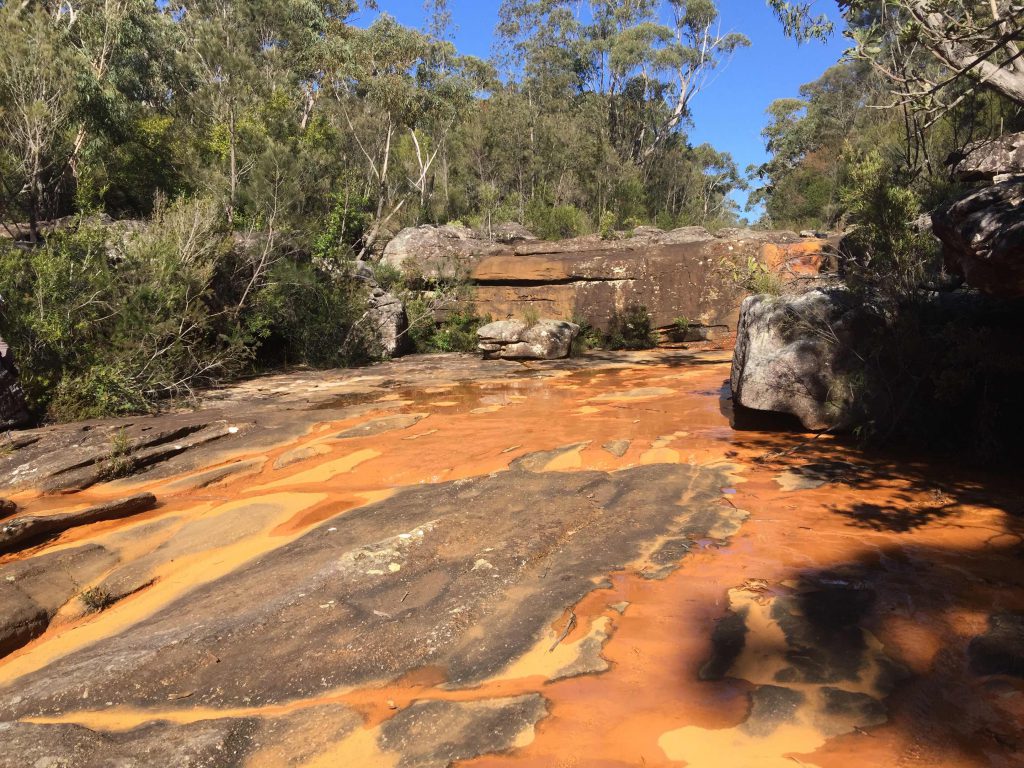
The photo here is the Eastern Tributary of the Waratah Rivulet – a major stream running into Woronora Reservoir. It was taken in 2019, and shows heavy iron oxidising bacteria growth and iron oxyhydroxide floc contamination. It’s changed to this discoloured orange rust colour because it drained underground through cracks caused by subsidence from the mining, and has come out again contaminated.
Water in this area is supposed to be pristine, clear, filtered through natural streams and swamps.
In a submission to the Independent Expert Panel looking into mining in the catchment WaterNSW wrote –
“An issue which particularly concerns WaterNSW is that it is anticipated that any additional increases in iron, manganese and possibly aluminum and other species dissolved from undermined catchments will impact on raw water quality delivered to Sydney Water and other customers…metals transported to reservoirs in particulate and/or dissolved forms are more likely to be precipitated and build up in the lake sediments over time.” (see p.24)
In addition to the concerns expressed by WaterNSW, over 20 independent scientists have questioned the ‘science’ that has been applied to justify the mining. They have called for this mining to be suspended “until the cumulative impacts and consequences of mining to date can be reliably assessed and quantified.” They have noted the government’s “dependence on assessment reports prepared by consultants selected and funded by mining companies”, and stated that “such reports cannot be regarded as independent”. None of this was mentioned in the 2020 parliamentary debate.
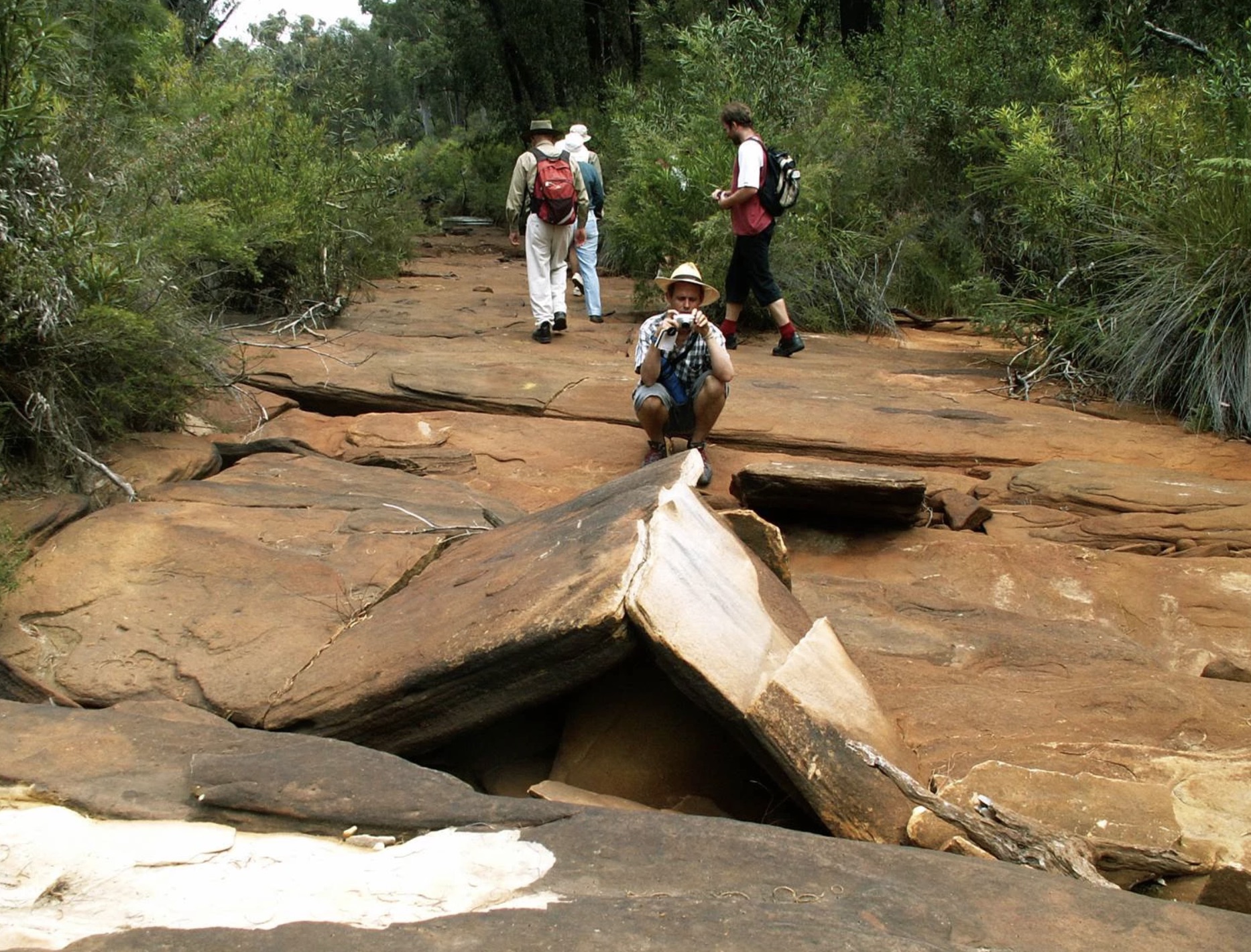
____________________________
Cumulative impacts could have serious negative consequences for reservoir water quality
The Woronora Reservoir catchment is classified as a ‘Special Area’ – permission is required to enter. Fines for entering without permission can be up to $44,000. Photos you see on this page were taken on the few occasions permission was granted. People are not normally allowed into the area in case they cause damage, or pollute the water. The only people who appear to be allowed in the area work for the mining company, Peabody.
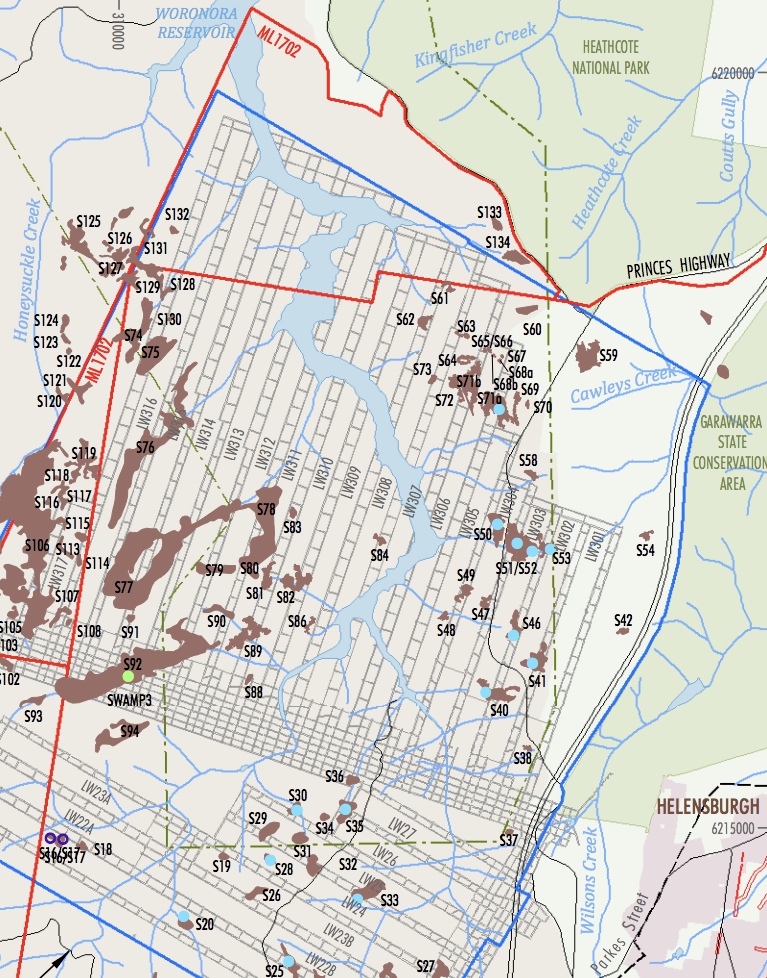
.
The Wororona ‘Special Area’ is covered with larger rivulets, streams and swamps. Swamps play a critical role in filtering and purifying our water. In the mine plan map here, the swamps are depicted in brown. A recent independent expert panel looking into mining in the catchment has noted that damage to swamps from mining can be irreversible. Their report states mining should not be allowed on the presumption that remediating swamps is possible.
Subsidence from longwall coal mining can create a network of cracks and fissures, tilting rock strata, draining creeks and drying out of swampland. If the water does reemerge from subsidence cracking it can be leached through with chemical contaminants including iron, aluminium and manganese, lithium, strontium, barium, titanium, zinc and nickel. Apparently even trace amounts of zinc and nickel are toxic. The final report by the independent Expert Panel looking into mining in this area also stated that water returning to the surface from mine workings can ‘leach metals’ and this ‘needs increased attention in mining proposals, especially in the Special Areas where ‘cumulative impacts could have serious negative consequences for reservoir water quality‘. See pp.vi-vii
Water quality in the Greater Sydney catchment has already been impacted by coal-mining activity: a recent freedom of information request found sludge accumulating on the bottom of Cataract and Cordeaux dams has resulted in elevated levels of iron that have exceeded acceptable limits more than 90 times in three years. Whether such contaminants are accumulating on the floor of the Woronora reservoir is unknown.
The Water NSW Act states a Function of WaterNSW is ‘to protect and enhance the quality and quantity of water in declared catchment areas’.
There is no ‘protecting’ and enhancing’ taking place at Woronora.
According to WaterNSW, mining in the Woronora Special Area catchment has resulted in ‘environmental consequences [that] have caused (or are likely to cause) breaches in conditions in the relevant development consents, including performance criteria to protect watercourses and Sydney’s drinking water catchment.’ They also say ‘that there are numerous deficiencies in the manner that analysis and modelling is currently being used to support mining applications in the catchment.’ See p.3
____________________________
Pool N
The video below shows ‘pool N’, which was a 150m long permanent pool of water, part of the Waratah Rivulet that flows into Woronora dam. It remained full during the 2006-7 Millennium drought. This video was taken in 2014 when it drained dry due to cracks in the bedrock.
The Independent Expert Panel report clearly states that predictions by mining companies about the impact of mining on surface and groundwater has not proven reliable, and that predictions about the impact mining has in terms of consequences for watercourses ‘remains an incomplete process’. The report states this raises the question of the reliability of estimates of how much water is being diverted from the catchment. See p.v
In addition to the danger of water being lost due to subsidence damage from current mining activity, the report also raises concerns about a ‘limited understanding’ of the extent to which water is entering old mine workings, and the danger of the ‘permanent diversion of catchment water into mine workings.’ It notes the potential for ‘perpetual water loss’ through entrances to mines that have not been ‘properly sealed’, and that water coming out from old mine entrances is likely to be contaminated and could ‘require treatment in perpetuity’.
____________________________
In July 2019 The Sydney Morning Herald published an article with video drone footage showing streams filled with horrible red and soupy green discoloured water: ‘Shocking’: Mining damage in Sydney’s catchment prompts calls for halt‘. In that article, Peter Turner, mining projects science officer for the National Parks Association, confirmed that “A lack of pre-mining data, limited monitoring, and inadequate catchment and reservoir water-balance modelling make it essentially impossible to reliably determine how much water was actually being lost.”
The Woronora Special Area catchment is a critical public asset, part of our water supply infrastructure. The Water NSW Act 2014 states WaterNSW has a statutory obligation ‘to protect and enhance the quality and quantity of water in declared catchment areas’. The Act also requires WaterNSW to act ‘in accordance with sound commercial principles’, and ‘to maximise the net worth of the State’s investment’.
Our water supply ‘Special Area’ catchments were set up originally so that if one failed the others could stand in as reserves. In 1998, extreme rain and flooding filled the drought-affected Warragamba Dam in just a few days. This triggered the Cryptosporidium crisis. Woronora was not affected. In 2015 the desalination plant was damaged by a typhoon and took a few years to properly repair.
Our ‘Special area’ catchments are meant to be protected for a reason.
____________________________
.
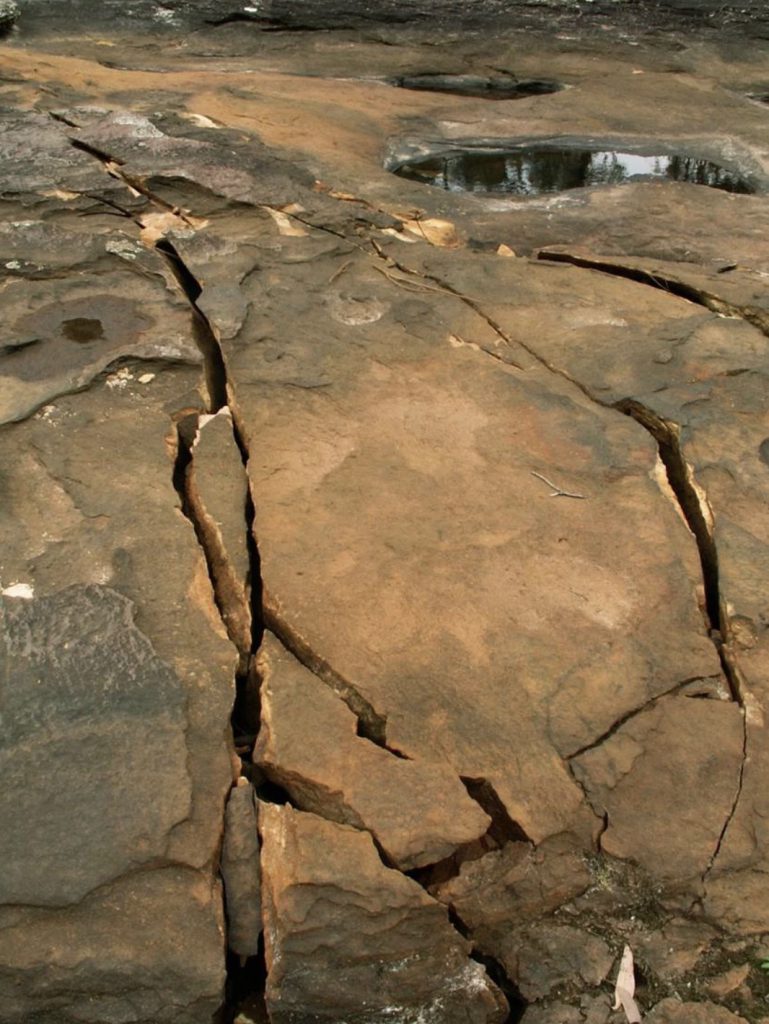
The Independent Expert Panel for Mining in the Catchment
The final recommendations in the Independent Expert Panel report suggest mining underneath Woronora Reservoir be allowed to continue subject to increased monitoring. The original terms of reference for this review was very narrow and only focused on identifying how to “strengthen the assessment of the ongoing operation of approved mines” and “undertaking further scientific research”. The terms of reference ensured the report focused on monitoring, rather than the question of whether mining should be allowed at all. This made the final recommendations a foregone conclusion.
We do not view continued mining with increased monitoring of increasing damage as a solution. Once mining induced subsidence cracking to the bedrock occurs it keeps happening. Movement in each longwall compounds already existing subsidence. Each successive tunnel will be impacted to an unknown extent by effects from previous adjacent longwalls. Impacts occur in an incremental manner across longwalls, and the final cumulative impact may take several years to be identified.
Subsidence can continue even 20 years after it first occurs – the damage is ongoing, and will get worse over time, even after the mining company has left.
Another serious concern with the final recommendations of the Independent Expert Panel report is that it mentions the possibility of ‘offsets as compensation for the consequences of negative environmental impacts’. In other words, the Report appears to suggest the government could consider accepting payment for irreversible damage to Sydney’s water supply as a result of longwall coal mining.
In the whole 400+ pages of the 2 volume report, there is only one innocuous picture of mining induced subsidence cracking.
____________________________
Remediation
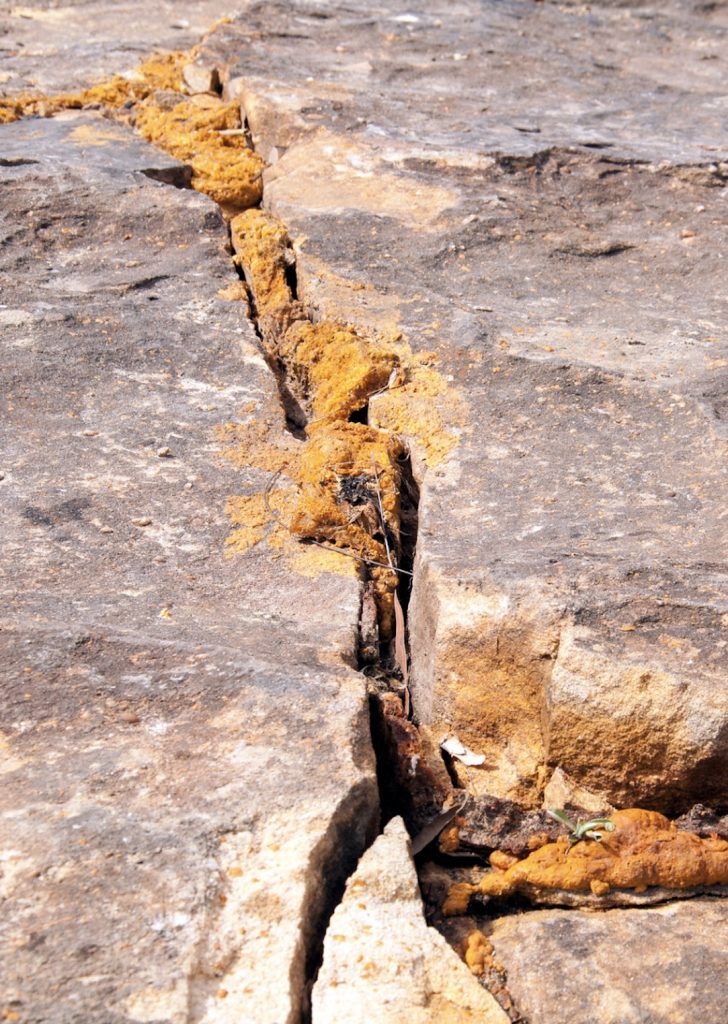
Peabody uses polyurethane grouting used to ‘repair’ subsidence cracking. For more photos see https://www.flickr.com/photos/62459458
.
Much of the water testing in the Woronora ‘Special Area’ is done by Peabody
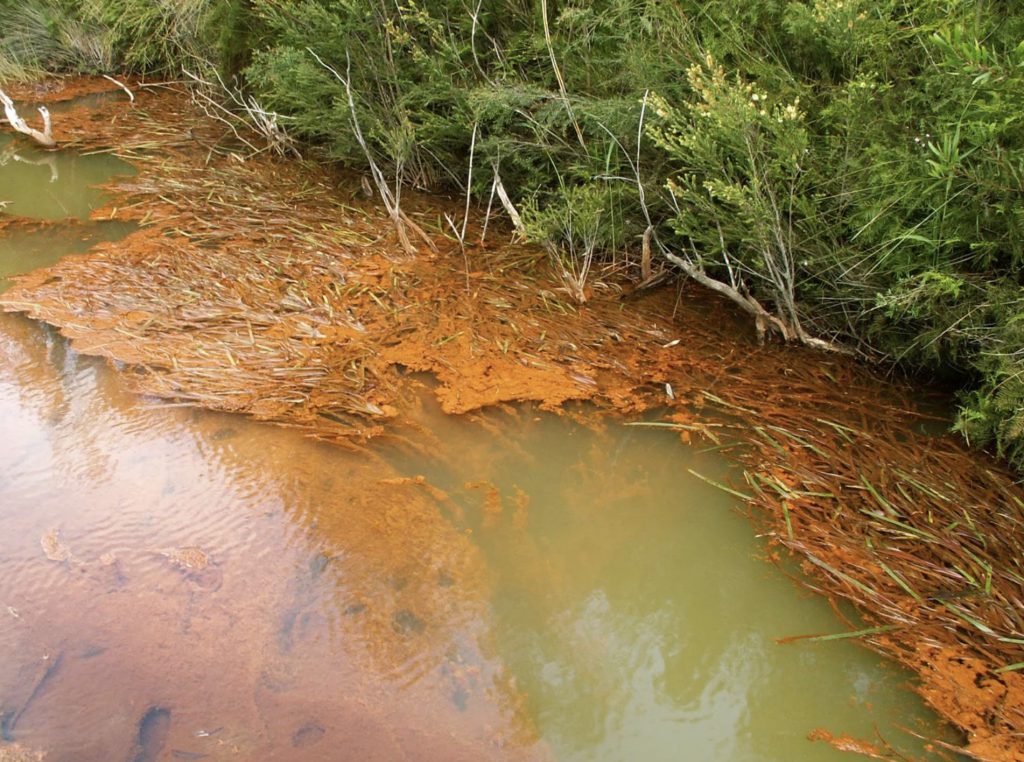
Peabody Energy Australia is a subsidiary of Peabody Energy Corporation in the USA. The company made $26 billion from its Australian subsidiaries over the last 8 years, but paid no tax. The parent company also has a terrible environmental record; it came last on the list for environmental compliance / impact when Newsweek ranked 500 large global companies in 2009 and 2012.
None of this was a concern for the NSW Department of Planning when they assessed, then approved the most recent application the company made to mine underneath our reservoir.
Much of the testing in the Woronora ‘Special Area’ appears to done by the mining company itself. WaterNSW reportedly only has two water testing stations in the catchment. Meanwhile Peabody’s ‘Woronora Reservoir Impact Strategy Panel’ (WRIS Panel) has argued against the need for any more detailed ‘Woronora reservoir water balance’ studies due to ‘difficulties in achieving the accuracy required to detect water losses from the reservoir due to mining’.
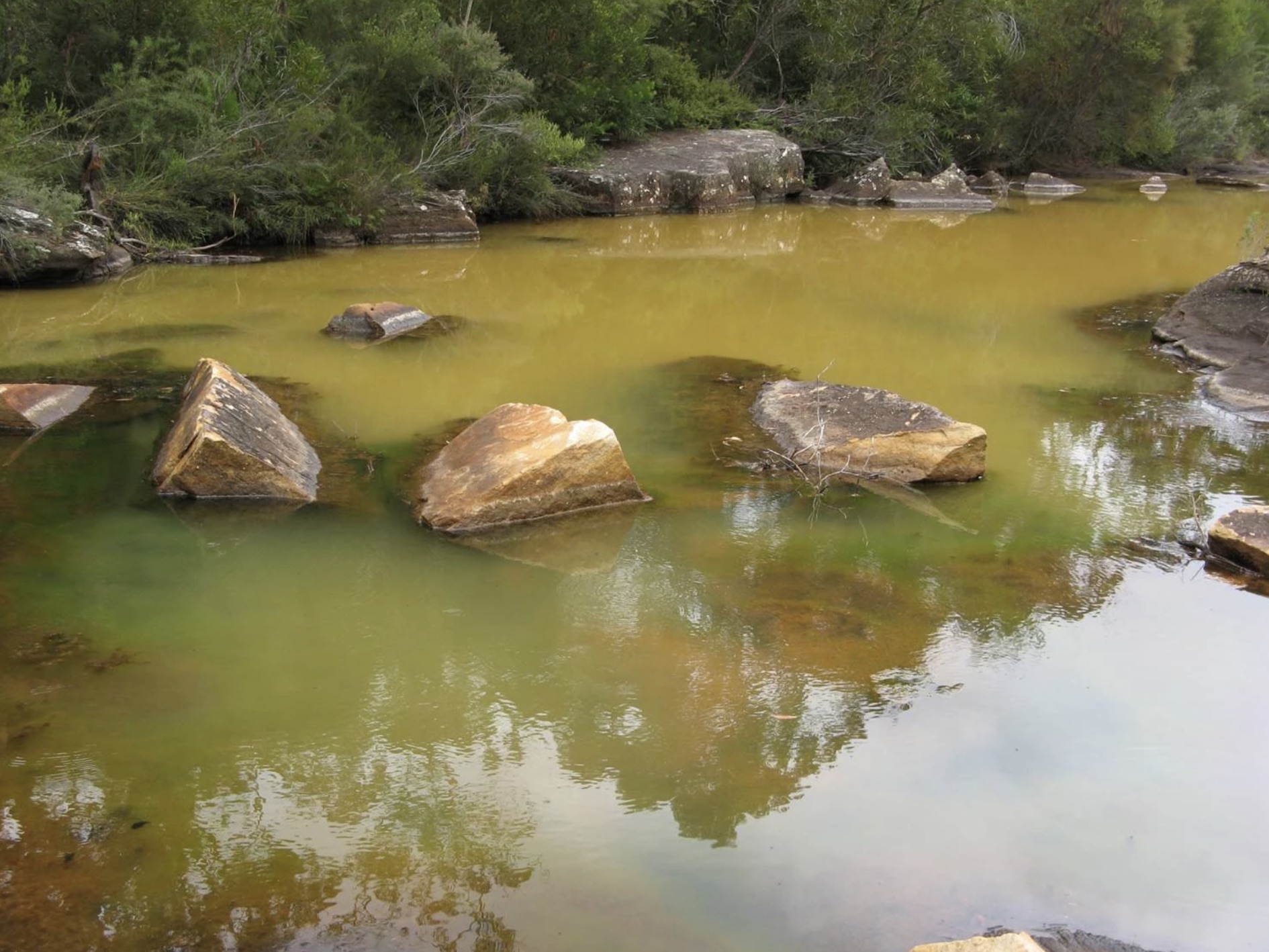
In advice provided to the Department of Planning regarding the approval of LW305-307, WaterNSW argued that a detailed water balance study would be one of the only ways to determine compliance with the Woronora Reservoir ‘performance measure’. Their advice has been dismissed.
The Department of Planning together with Peabody appear to have united to circumvent further studies, discounted the advice of WaterNSW, and handed responsibility for monitoring the health of our ‘Special Area’ catchment to the mining company itself.
This in turn ignores the advice of a 2014 report by the NSW Chief Scientist which recommended setting up a ‘whole of catchment’ modelling system that could assess and predict cumulative impacts.
None of the recommendations from this 2014 report have been implemented. Certainly not at Woronora.
For those who are interested in the latest “science / studies” used to justify the mining, the last page of Peabody’s ‘Woronora Reservoir Impact Strategy Panel’ report features a list of references used by Tom McMahon, one of the Peabody consultants – his oldest reference is from 1948 – ‘Penman HL, 1948. Natural evaporation from open water, bare soil and grass.’
The average age of the references appears to be around 27 years old.
____________________________
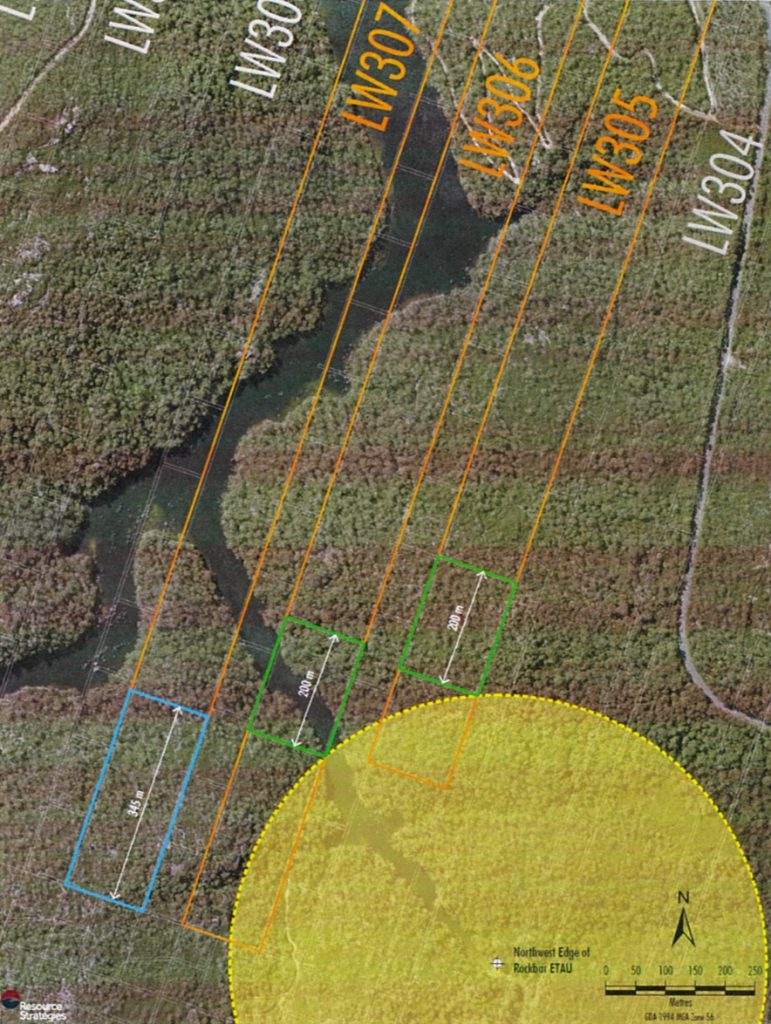
The photo on the left here is from the Department of Planning document approving LWs 305-307. The green lines at the bottom of the image in LW305 and 306 depict ‘setbacks’ from the Eastern Tributary of the Waratah Rivulet – purportedly intended to avoid further damage to the Rivulet, even as the mines extend under the reservoir itself.
The photo is dated 1993, before the more recent mining induced subsidence damage took place.
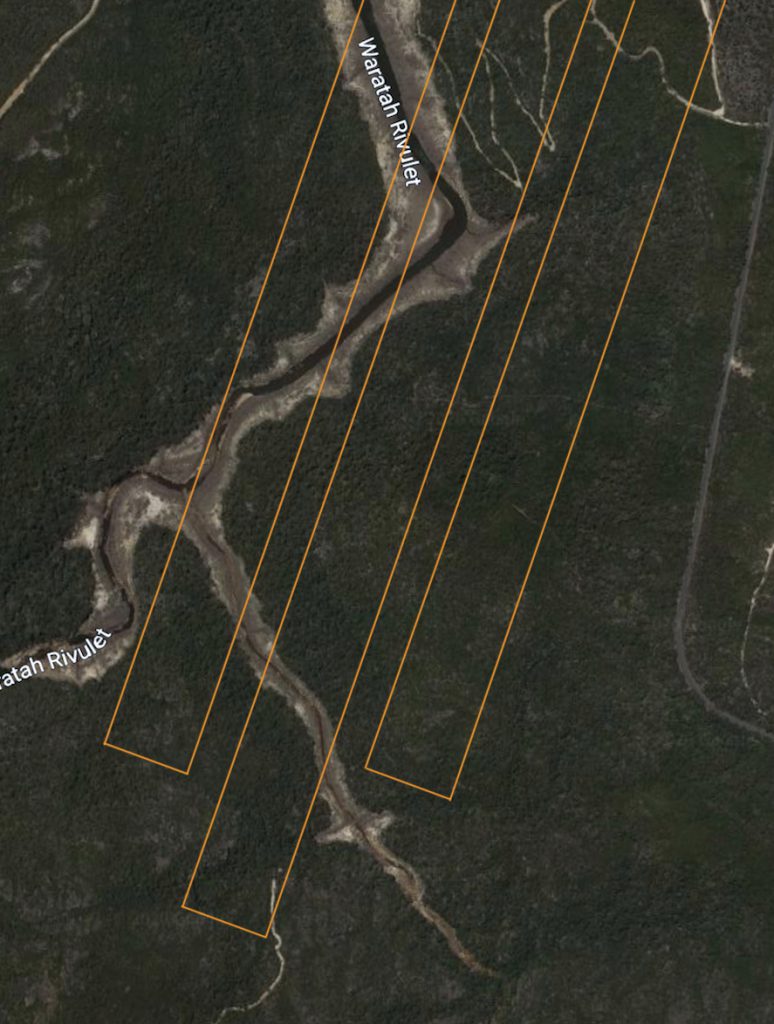
.
.
.
.
The photo on the right is exactly the same area, a satellite image taken from google earth, 25 years later, in March 2018.
Woronora reservoir was 77% full when this second photo was taken.
The image suggests that streams and pools in this area are simply no longer holding water.
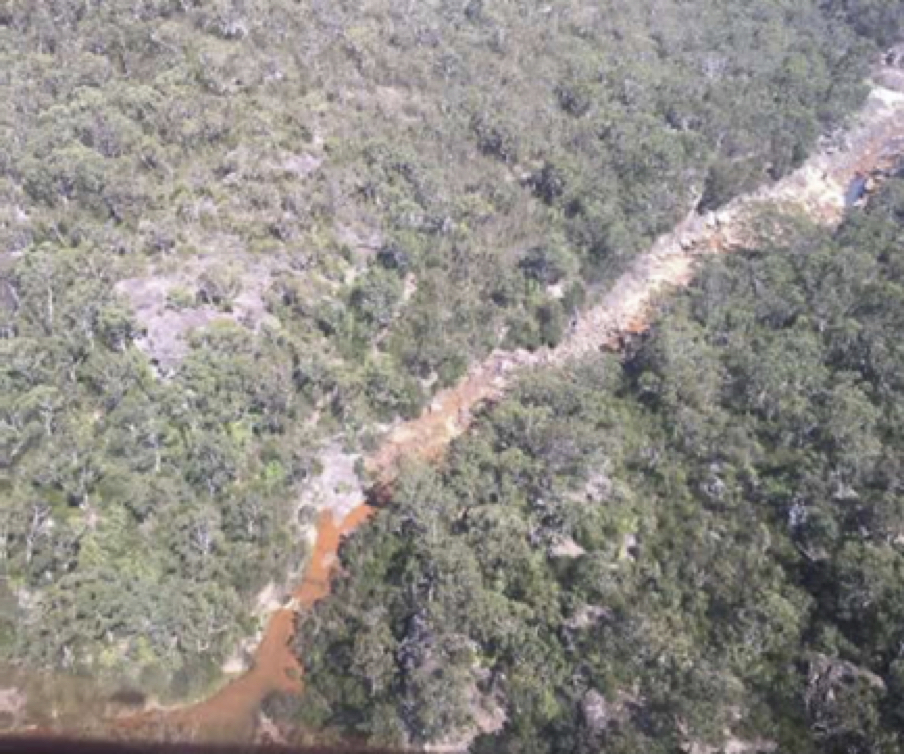
_______________________________
This third photo is from a WaterNSW submission to the Independent Expert Panel looking into mining in the catchment.
It was taken in October 2018.
This is the Waratah Rivulet – our drinking water – from another angle.
_______________________________
“…baseflow contributions are particularly at risk from longwall mining as groundwater levels typically reduce, sometimes by as much as 90m, following undermining and it is not certain whether long-term recoveries will ever return to pre-mining levels.” p.80
WaterNSW submission to the Independent Expert Panel for Mining in the Catchment
_______________________________
.
WaterNSW Potential catchment loss mechanisms due to mining induced subsidence
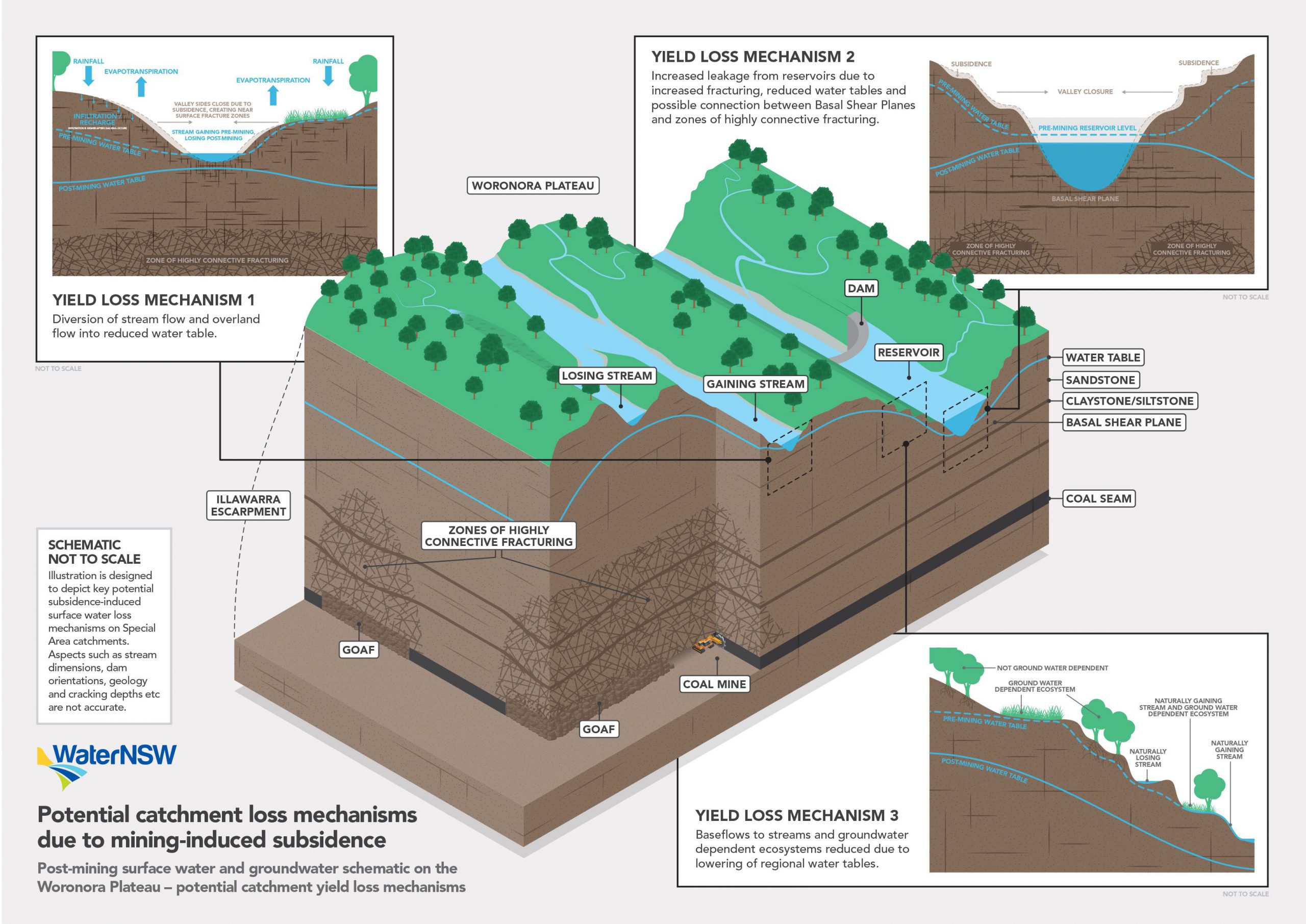
_______________________________
In February 2020 Peabody applied for yet another coal exploration permit in the catchment. This was approved in 2022.
.
.
In February 2020, in a move signalling utter contempt for community concerns, the company felt confident enough to apply for yet another exploration licence. This was granted in 2022.
Exploration approval EL9364, shown here in blue, allows Peabody to explore for coal across a further 2042 hectares of the Woronora ‘Special Area’ catchment under and around the left arm of the reservoir: “‘Perverse’: Peabody lodges new coal mining bid for Sydney’s catchment“.
Nic Clyde, from Lock the Gate Alliance, referred to it as “an insult to all who rely on Sydney’s water supply… Perversely, lodged when the city has only just begun to recover from one of the worst droughts on record, when water supplies dropped to 42 per cent.”
We have not been able to obtain a ‘schedule of works’ but the company is now able to take in machinery, carry out drilling and other invasive activities in an area the general public is not allowed to go, at risk of being fined $44,000.
_______________________________
For more information or to help with this campaign contact Dr Catherine Reynolds – catherine@ssec.org.au or 0424 644 144
Further Reading
____________________________
22 march, 2021 “Scientists warn of ‘irreversible’ damage to endangered swamps near Sydney if longwall mining continues” ABC Illawarra
21 June, 2020 “Lack of transparency plagues planning approval process” Independent Australia
12 June, 2020 “Groups fighting coal mines under Woronora Dam fail to make headway” The Leader
5 June, 2020 “‘Stitch up’: groups dismayed by debate about US giant’s approval to mine beneath Sydney drinking water reservoir“, NineNews
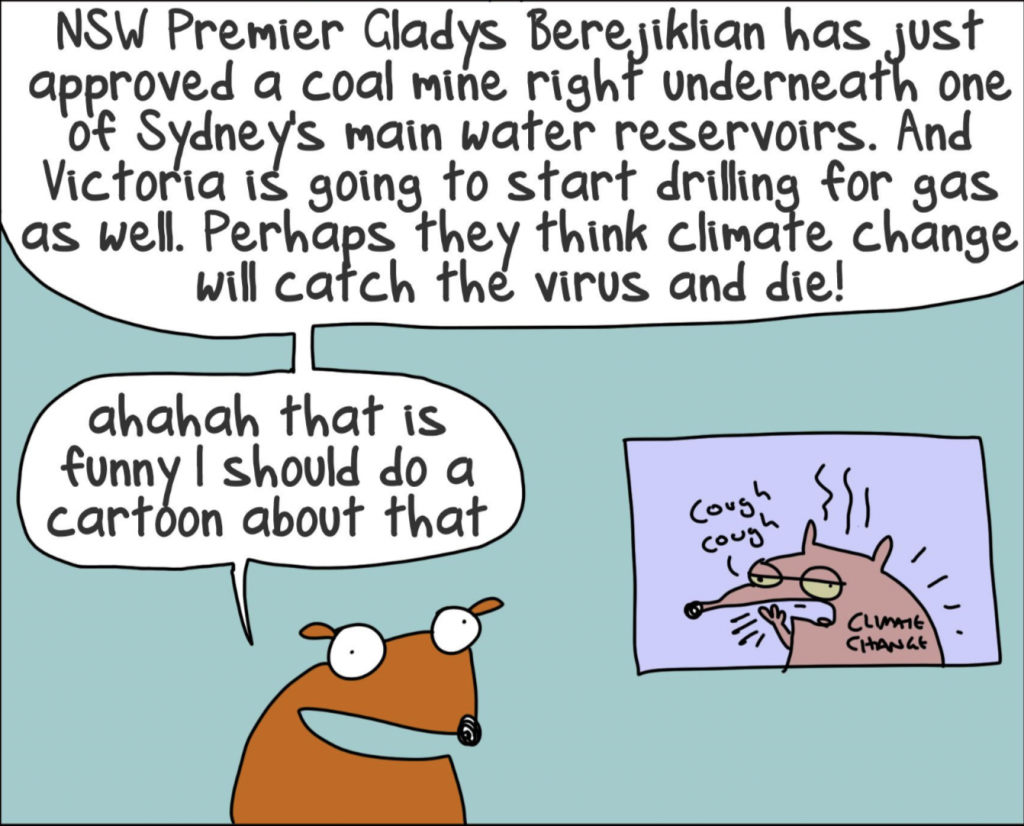
1 June, 2020 “‘Bulging valleys’: Call for state to halt catchment coal mining” Sydney Morning Herald
15 May, 2020 “Open Letter to the Premier of NSW Regarding Coal Mining in the Schedule 1 Special Areas of the Sydney Drinking Water Catchment“
9 May, 2020 “‘Scandalous’: US giant approved to mine beneath Sydney drinking water reservoir ‘under cover of coronavirus’“, NineNews
4 May, 2020 “Call for state government compo payment to stop mining under Woronora Dam” The Leader
28 April, 2020 “Cutting ‘green tape’ may be good politicking, but it’s bad policy. Here are 5 examples of regulation failure“, The Conversation
8 April, 2020 “Berejiklian Government uses COVID-19 crisis to further environmental vandalism“, Independent Australia
April 4, 2020 “Beware what’s happening under the cover of COVID-19” Sydney Morning Herald
April 3, 2020 “Coal mining under Woronora Dam to go ahead after community campaign fails to sway government“, The Leader
31 March, 2020 “Fears for water quality after NSW allows coalmining extension under Sydney’s Woronora reservoir“, The Guardian
30 March, 2020 “NSW approves coal mine expansion under drinking water catchment“, Renew Economy
March 29, 2020 “Coal mining allowed under Sydney water reservoir for first time in 20 years”, Sydney Morning Herald
February 16, 2020 “‘Perverse’: Peabody lodges new coal mining bid for Sydney’s catchment“, Sydney Morning Herald
7 February, 2020 “There’s No Promised Land for Coal, in Australia or America: Peabody might calm investors if it sold its most profitable mines, but the outlook for its business is grim”, Bloomberg Opinion
4 December, 2019 “Environment and community groups in joint effort to end mining under Woronora catchment”, The Leader
2 December, 2019 “Coal power becoming ‘uninsurable’ as firms refuse cover”, The Guardian
1 December, 2019 “‘Shocking’ metallic sludge contaminating Sydney dams that supply drinking water” ABC News
November 11, 2019 “New coal projects in Sydney’s catchment on hold after panel’s reports”, Sydney Morning Herald
Independent Expert Panel for Mining in the Catchment website: final reports and submissions
14 October, 2019 Report from the Independent Expert Panel for Mining in the Catchment Part 2
17 September, 2019 “Sydney, Illawarra drinking water catchment under threat as mining takes toll on key wetlands” ABC Illawarra
6 September, 2019 “Water supply a real concern as Macarthur population grows“, Campbelltown Macarthur Advertiser
July 27, 2019 “‘Shocking’: Mining damage in Sydney’s catchment prompts calls for halt”, Sydney Morning Herald
March 2019 WaterNSW Second Submission to the Independent Expert Panel for Mining in the Catchment WaterNSW
February 22, 2019 “Energy Company Pushes Navajo Nation to Assume Liability for Coal Plant”, Truthout
May 2018 WaterNSW Submission to the Independent Expert Panel on Mining in Sydney Catchment WaterNSW
Phillip Lorenzelli, Dr Ian Wright and Dr Peter Davies 2018, ‘What happens to the stream when the coal mine closes‘, Proceedings of the 9th Australian Stream Management Conference. Hobart, Tasmania
21 August, 2017 “Toxic water from old mine entering Sydney’s drinking catchment, research warns”, ABC News
April 13, 2016 “Half a dozen ways out of rehab for coal companies”, Michael West Media
4 January 2016 “The Wizards of Bridge Street: Inside the magical NSW mining approvals factory” Independent Australia
30 May 2014 “On measuring the cumulative impacts of activities which impact ground and surface water in the Sydney Water Catchment” Report by the NSW Government Chief Scientist and Engineer
30 December, 2013 “Mining contaminates Woronora Reservoir, a major source of southern Sydney’s drinking water” Nature Conservation Council
1 May, 2012 “Waratah Rivulet… Our drinking Water in Crisis” National Parks Association of NSW
15 December, 2011 “Community voices raise concern over Waratah Rivulet” ABC Local (this article has an excellent audio interview outlining what is at stake)
25 November, 2008, “Cure for cracked river riles greens” Sydney Morning Herald

